Like stepping into a postcard, Page pulls you toward vistas you’ve seen a thousand times yet can’t stop staring at. You’ll discover Horseshoe Bend’s curve, the light-filtered walls of Antelope Canyon, and quiet Lake Powell shores, with practical tips to make each stop smoother. Whether you’ve got a single day or a week, you’ll learn the best seasons, permits to book, and safety gear to pack — and why timing matters more than you think.
Must-See Sights and Photo Spots in Page
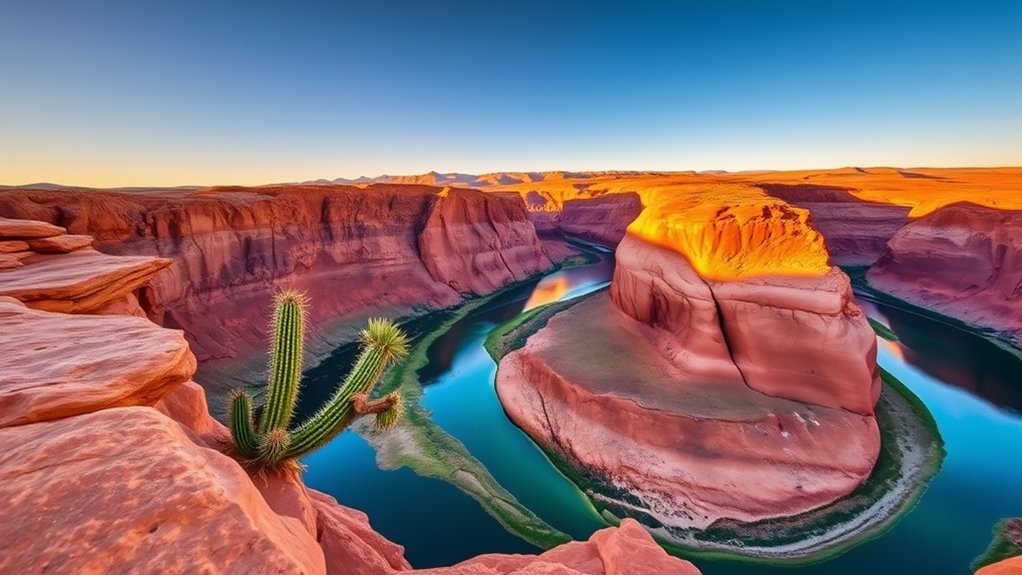
When you visit Page, Arizona, you’ll find a compact town that opens onto some of the Southwest’s most photogenic landscapes—slickrock canyons, turquoise lakes, and dramatic desert overlooks—so plan for early mornings and golden hours to get the best light. You’ll start at Horseshoe Bend, where a short walk delivers that iconic river-curving panorama; bring a wide lens and steady your tripod for sunrise silhouettes. Antelope Canyon’s slot passages reward guided tours with carved sandstone, beams, and textures you’ll want to capture frame by frame. On the water, Lake Powell offers contrasty reflections and hidden coves—rent a boat to reach Rainbow Bridge and remote photo ops. Don’t miss Glen Canyon Overlook for sweeping vistas and the Navajo Village for cultural portraits and crafts. Scout overlooks along Highway 89A for layered mesas and ephemeral pools after rain. Pack polarized filters, extra batteries, and sun protection; respect Navajo rules and seasonal access to preserve these views for everyone.
Best Time to Visit and Weather Tips
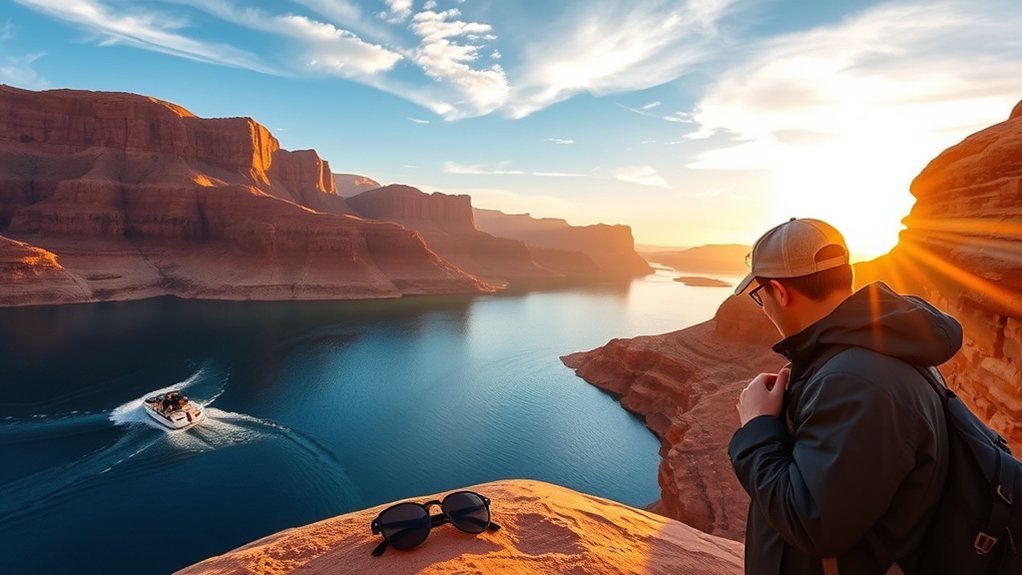
If you want mild temperatures and manageable crowds, plan your trip for spring (March–May) or fall (September–November), when daytime highs stay comfortable and mornings offer crisp light for photos. You’ll enjoy clear skies, cooler evenings, and easier access to popular sites. Summers get hot and crowded; pack sun protection, stay hydrated, and schedule hikes for early morning. Winters can be chilly with occasional snow — roads may be slick but vistas are striking and quieter.
| Season | What to Expect |
|---|---|
| Spring | Blooming desert plants, pleasant days |
| Summer | High heat, peak crowds |
| Fall | Golden light, cooler temps |
| Winter | Cold mornings, possible snow |
Check local forecasts, start activities early to avoid midday heat, and carry layered clothing for rapid temperature swings. Bring sturdy shoes for varied terrain, sunscreen, and a refillable water bottle. If you want fewer people in photos, visit popular sites at sunrise or late afternoon.
Sample Itineraries: 1-Day to 7-Day Plans
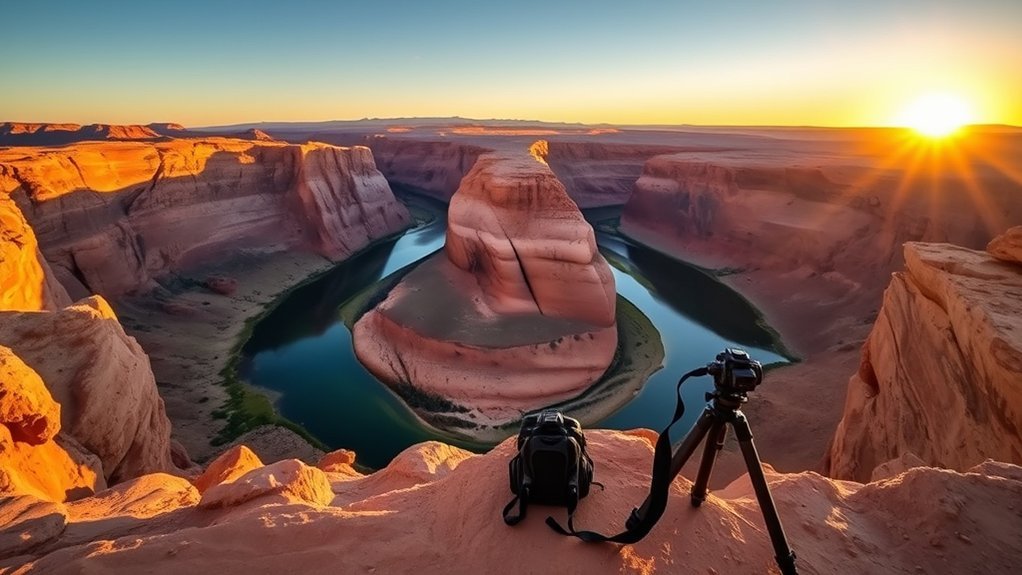
Because your time and interests vary, these sample itineraries give you clear, flexible plans you can tailor from a quick day trip to a relaxed week-long exploration. Start by choosing the pace you want: a focused highlights day, a two- or three-day intensive exploration, or a leisurely seven-day circuit. Each plan balances iconic sights, local neighborhoods, scenic breaks, and time for spontaneous discoveries. You’ll get morning priorities to beat midday crowds, midday options for meals and markets, and evening suggestions for dining or sunset views. Pack basics for walking, note transfer times between hubs, and leave buffer hours so you can linger where you love.
- One-day express: must-sees, quick museum stop, signature meal.
- Three-day classic: core attractions, a nearby day trip, relaxed dining.
- Seven-day slow travel: neighborhoods, museums, outdoor excursions, flexible rest days.
Use these templates to mix activities, rest, and surprises based on your energy and interests.
Permits, Tours, and How to Beat the Crowds
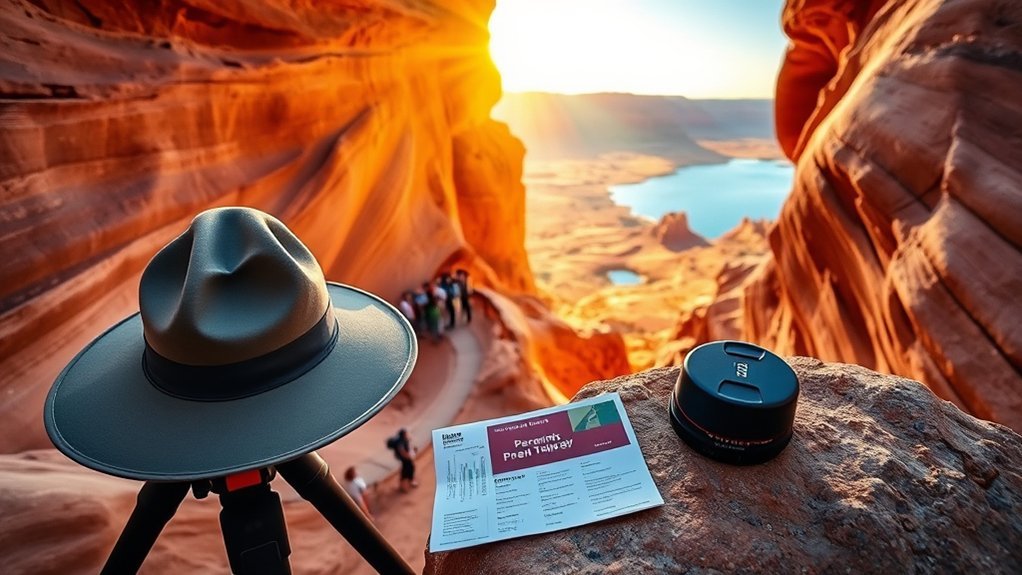
Although some top sights feel open to everyone, you’ll often need permits or timed-entry tickets to avoid fines and long lines, so plan ahead and book what you can online. Check official park or museum sites for permit windows, reservation caps, and peak-season rules; third-party sellers sometimes mark up prices or sell scalper tickets. Join a guided tour when access is limited—local guides can secure special slots, explain regulations, and point out details you’d miss alone. For popular viewpoints, aim for first light or late afternoon to catch golden hours with fewer people. Use apps that show real-time visitor levels, and book midweek slots if your schedule allows. Consider shorter, off-peak experiences: sunrise hikes, twilight boat rides, or timed-entry museum wings. If you prefer independence, arrive with a clear backup plan—alternate stops or flexible timing—to avoid wasting the day. Respect capacity rules; they preserve the place and your chance to enjoy it.
Safety, Gear, and Practical Travel Advice
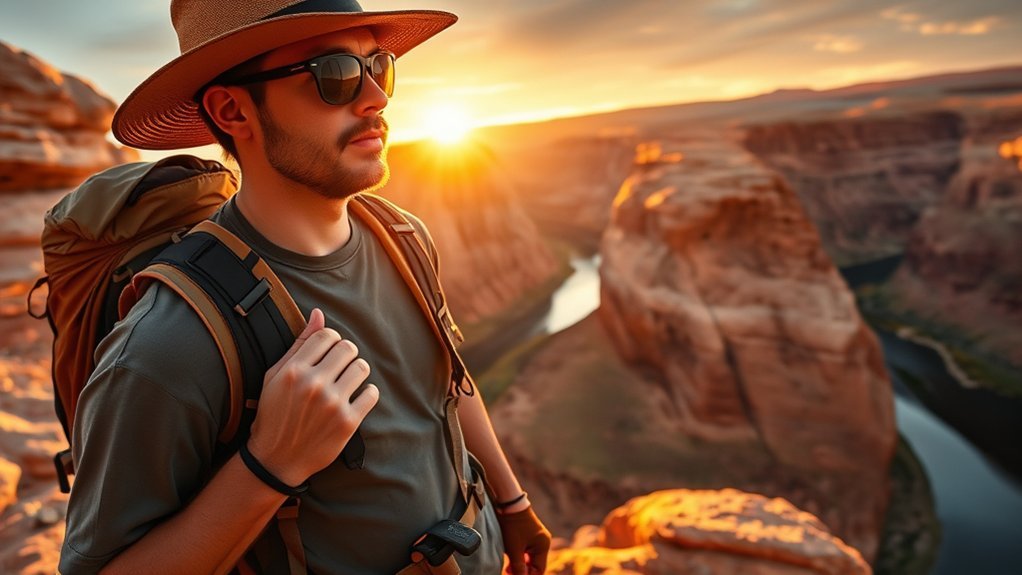
After sorting permits, timing, and backups, you’ll want to turn attention to staying safe and well-prepared on the ground. You’ll check local weather, trail conditions, and recent advisories so you’re not surprised by flash floods or closures. Pack layered clothing, a reliable headlamp, and a compact first-aid kit; test gear before you leave and leave a trip plan with someone at home. Learn a few emergency phrases in the local language and download offline maps and contact numbers.
- Navigation essentials: map, compass/GPS, extra batteries — practice route-finding beforehand.
- Safety kit: first-aid supplies, whistle, multi-tool, water purification, and emergency shelter or bivy.
- Daily routine: hydrate, pace yourself, monitor altitude/sea conditions, and avoid risky shortcuts after dark.
Frequently Asked Questions
Are There Wheelchair-Accessible Routes to Antelope Canyon and Horseshoe Bend?
Yes — you can access Horseshoe Bend via a paved, wheelchair-friendly trail and overlook with limited ramps; Antelope Canyon has partial accessibility on guided tours, but terrain and stairs may restrict some visitors, so check tour accommodations.
Where Can I Find Local Native American Cultural Experiences or Events?
Right off the bat, you’ll find authentic Navajo and Hopi events at nearby cultural centers, tribal-run tours, powwows, museums, and seasonal festivals — check visitor centers, tribal websites, local listings, and ask guides to get the full scoop.
Are There Grocery Stores, Pharmacies, and Supplies in Page City Limits?
Yes — you’ll find grocery stores (Safeway, Bashas’), a few pharmacies, and several convenience and outdoor-supply shops within Page city limits, so you can stock food, meds, and gear before exploring nearby attractions.
What Are the Best Apps or Offline Maps for Navigating Page Without Cell Signal?
Use Gaia GPS, AllTrails, Maps.me, and OsmAnd; you’ll download offline topo and trail maps, cache routes in Google Maps, and save GPX tracks so you’ll navigate hikes, slot canyons, and scenic drives without cell service.
Can I Charge Electric Vehicles Around Page and Where Are Charging Stations Located?
Yes — you can charge EVs around Page; public Level 2 and a few DC fast chargers sit at hotels, grocery stores, and near US-89/US-98. Check PlugShare or ChargePoint for real-time availability and adapter requirements.
Conclusion
You’ll find Page’s iconic views—Horseshoe Bend, Antelope Canyon, Lake Powell—ready to reward curiosity, whether you’ve only got a day or a week. Don’t worry about crowds or permits: book timed entries or a guided tour early, go in spring or fall, and use early mornings to beat lines. Pack layers, sun protection, lots of water, and a map or GPS. With a little planning, you’ll leave with unforgettable photos and stories.

